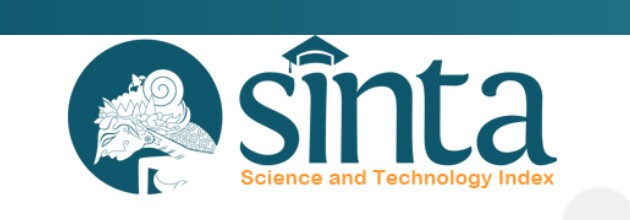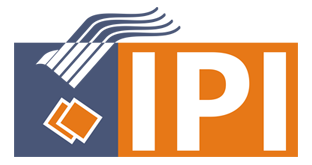EDUCATION FOR SUSTAINABLE DEVELOPMENT (ESD) MELALUI PEMAHAMAN MASYARAKAT UNTUK MENGURANGI SAMPAH POPOK SEKALI PAKAI DENGAN MENGGUNAKAN POPOK REUSE
Abstract
With regard to the environment, waste has a wide impact such as environmental pollution. Development of monitoring in terms of pengelolahan and conservation of river ecosystems needs to be done, the habit of disposing waste disposable diapers is certainly very dangerous to the quality of river water and for the sustainability of the river in the future, because disposable diapers are disposable waste products that contain dirt (stool) and urine from infants, which can have a negative impact on the community's most potent impacts of river pollution. The use of reuse diapers in modern packaging is a product that has long-term economic value because it can be reused, in addition to having medical benefits compared to disposable diapers, is also an important concept to educate the public about the benefits of reuse diapers on the environment. An activity is needed to understand the importance of protecting the environment by reducing the use of disposable diapers, in order to realize Sustainable Development or future sustainable development. The methods used in this research are: lectures through counseling and qualitative descriptive, Counseling is used to give an overview of the effect of disposable diaper use and the solution through the use of reuse diapers, and descriptive qualitative to analyze the outcomes of early and late community understanding before and after being given counseling. The result of the research shows that the society understanding is reduced by 88,2% for the not understood category seen from the first oral test of the end, for the sufficient understanding category increased by 11,7%, the criterion of understanding increased 17,6%, and for category very understand from the previous 0% increased his understanding by 58.9%.
Keywords
Full Text:
PDFReferences
Ahmed, F., Aziz, M. A., Alam, M. J., Hakim, M. A., Khan, M. A. S. (2015). Impact on Aquatic Environment for Water Pollution in The Vahirab River. The International Journal of Engineering And Science (IJES), 4(8): 56-62.
Anatolia, Levi. (2015). Pengaruh Pengelolaan Sistem Pembuangan Akhir Sampah dan Dampak Terhadap KesehatanMasyarakat di Desa Tibar Timor Leste. Jurnal bumi lestari, Vol 15(2).
Badali, Fawaz Al., Othman, Mohammad, S., & Gasim, M. B. (2013). Water Quality Assesment of the Semenyih River, Selangor, Malaysia. Journal of Chemistry, 2013.
Ghassani, Raisha & Yusuf, Umar. (2015). Studi mengenai Intensi Membuang Sampah di Sungai Cikapundung pada Ibu-ibu RW 15 Kelurahan Tamansari Bandung. Jurnal Psikologi, 2: 2460-6448.
Harahap, Alprida., Naria, Eva., & Santi, Devi Nuraini. (2013). Analisis Kualitas Air Sungai Akibat pencemaran tempat pembuangan akhir sampah batu bola dan karakteristik serta keluhan kesehatan pengguna air sungai ayumi di kota padang sisimpuan tahun 2012. Jurnal lingkungan, 2(2).
Herlambang Arie. (2006). Pencemaran Air dan Strategi Penanggulangannya. JAI, 2(1).
Meseldzija, Jelena., Poznanovic, Danijela & Frank, Richard.(2013). Assesment of the differing environmental impacts between reusable and disposable diapers. http://www.dufferinresearch.com/images/sampledata/documents/Environmental%20Impact%20Report%20-%20Cloth%20vs%20Disposible.pdf
Mutaqin & Heru, Totok. (2010). Pengelolahan Sampah Limbah Rumah Tangga dengan Komposter Elektrik Berbasis Komunitas. Jurnal LITBANG Sekda DIY Biro Adm Pembang, 2(2): 2085-9678.
Purwaneni, Hartuti. (2014). Keijakan Pengelolaan Lingkungan di Kawasan Kendeng Utara Provinsi Jawa Tengah. Jurnal ilmu lingkungan, 12(1): 53-65.
Rahat, S.H., Sarkar, A.T., Rafie, S. A. A & Hossain, S. (2014). Prospect of Diaper Disposal and Environmental Impacts on Populated Urban Area like Dhaka City. International Conference on Advances in Civil Engineering 2014 (ICACE-2014) 26-28 .
Santoso, Slamet. (2009). Dampak Negatif sampah terhadap lingkungan dan Upaya mengatasinya. Fakultas Biologi: Unsoed Purwokerto.
Sukrorini, Tri., Budiastuti, Sri., Ramelan, H. A., & Kafiar, P. F. (2014). Kajian dampak timbunan sampah terhadap lingkungan di tempat pembuangan akhir (TPA) putri cempo surakarta. Jurnal EKOSAINS, 6(3).
Tembo, Effel & Chazireni, Evans. (2017). The Negative Environmental Impact of Disposable: The Case of Mberengwa District, Zimbabwe. International Journal of Healthcare Sciences, 4(2): 2158-2161.
Wade, Ros. (2012). Pedagogy, Place and People. Journal Of Teacher Education For Sustainability, 14(2):147-167.
Wambui, K.E., Joseph, M., & Makindy, S. (2015). Soiled Diapers Disposal Practices Among Caregivers in Poor and Middle Income Urban Setting. International Journal of Scientific and Research Publications, 5(10.
Wibisono, A. F., & Dewi, P. (2014). Sosialisasi bahaya membuang sampah sembarangan dan menentukan lokasi TPA di dusun deles desa jagonayan kecamtan ngablak. Jurnal Inovasi dan Kewirausahaan, 3(1): 2089-3086.
Zwane, P. E. (2010). Product Development: Reusable Diaper. AUTEX Research Journal, 10(
Article Metrics
Abstract has been read : 1857 timesPDF file viewed/downloaded: 0 times
DOI: http://doi.org/10.25273/florea.v5i1.2503
Refbacks
- There are currently no refbacks.
Copyright (c) 2018 Florea : Jurnal Biologi dan Pembelajarannya

This work is licensed under a Creative Commons Attribution-ShareAlike 4.0 International License.
Florea: Jurnal Biologi dan Pembelajarannya indexed by:



Copyright Florea: Jurnal Biologi & Pembelajarannya
View Florea Stats





